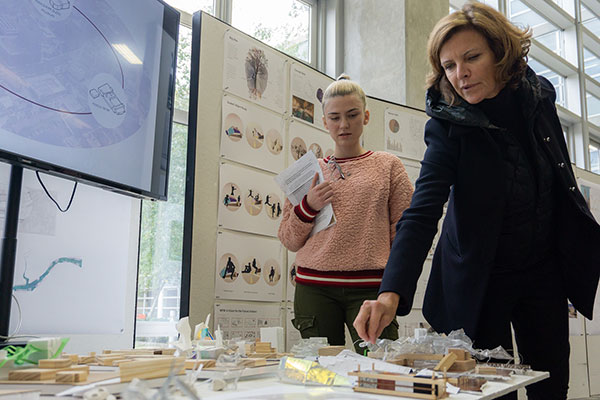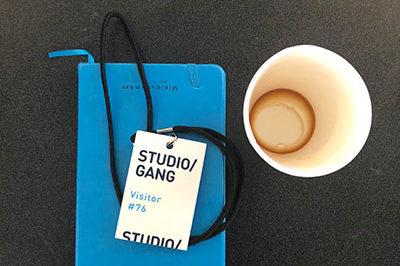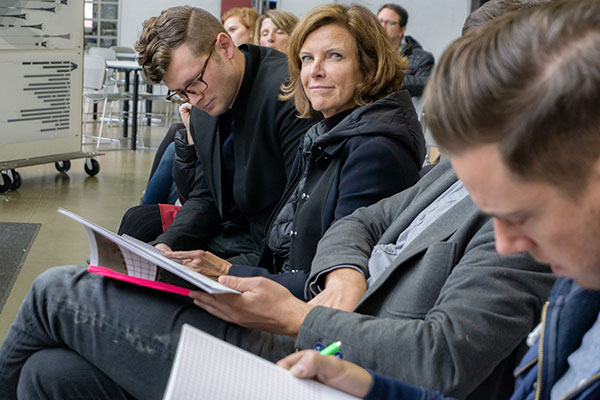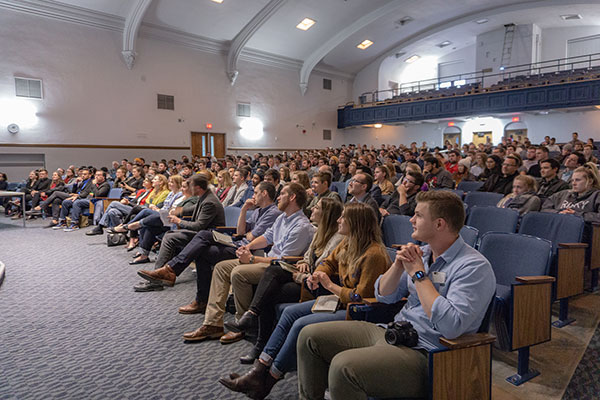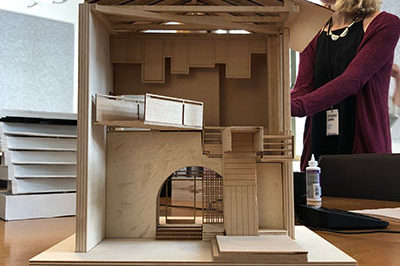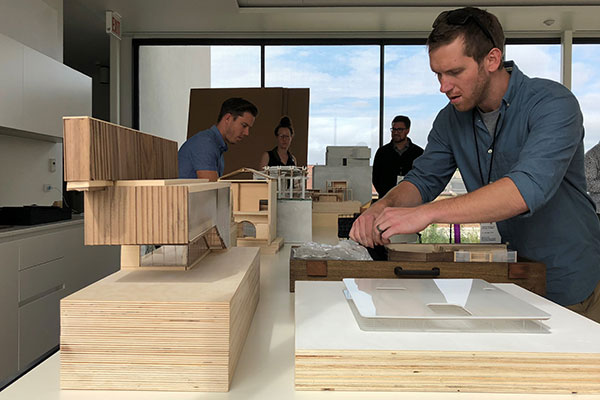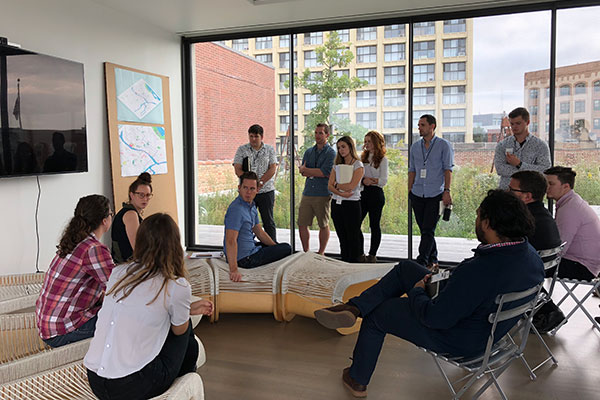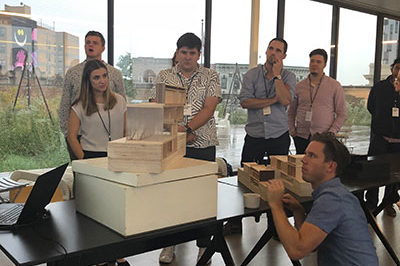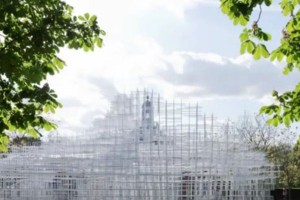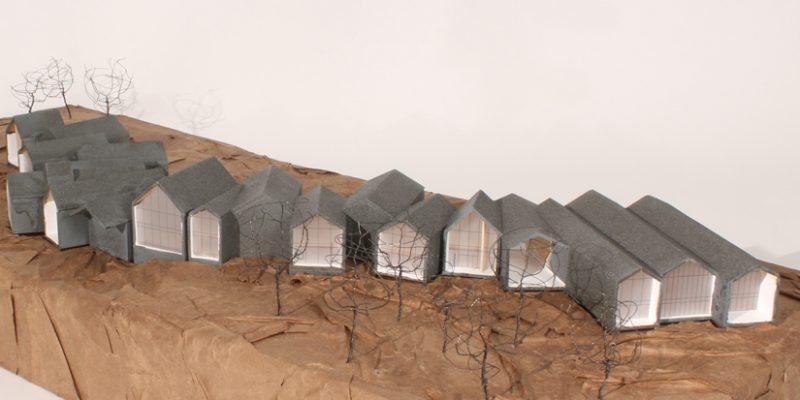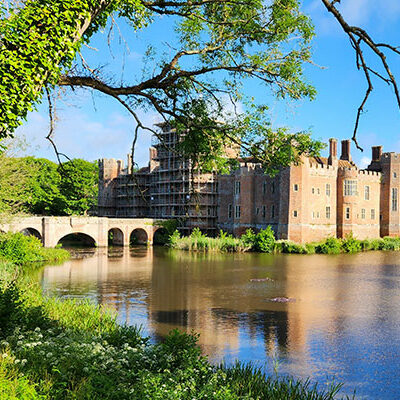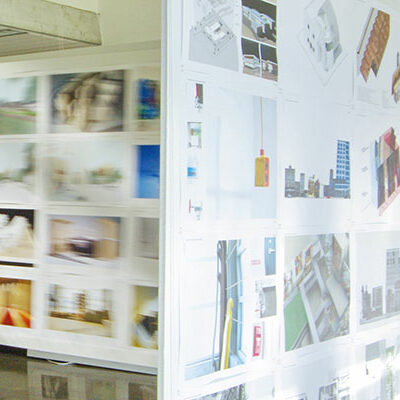SARUP awards 2023 Marcus Prize to Chinese Architect
Beijing-based architect Tiantian Xu has won the 2023 Marcus Prize, a renowned achievement in international architecture that includes a $100,000 award and a supported design studio for students in the School of Architecture and Urban Planning at UW-Milwaukee
The prize, which recognizes emerging global talents, is funded by the Marcus Corporation Foundation. Half of the prize amount goes to the winner and the other half covers the cost to bring Xu to Milwaukee to teach a spring 2024 studio at UWM that will focus on a specific topic affecting the city.
The Marcus Prize honors architects for their outstanding work to date as well as their promise of future greatness.
Xu, the 10th Marcus Prize awardee since the award’s inception in 2005, is the founding principal of DnA _Design and Architecture. Her firm’s architectural projects have engaged in the economic revitalizing process in rural China, using a holistic approach described as “architectural acupuncture.”
Meet Tiantian Xu and learn more in the official press release.
Marcus Prize Winners
2023 – Tiantian Xu, DnA_Design and Architecture
2021 – Antón García-Abril and Débora Mesa, Ensamble Studio
2019 – Tatiana Bilbao, Tatiana Bilbao Estudio
2017 – Jeanne Gang, Studio Gang
2015 – Joshua Ramus, REX
2013 – Sou Fujimoto, Sou Fujimoto Architects
2011 – Diébédo Francis Kéré, Kéré Architecture
2009 – Alejandro Aravena, Elemental
2007 – – Frank Barkow and Regine Leibinger, Barkow Leibinger
2005 – Winy Maas, Jacob van Rijs and Nathalie de Vries, MVRDV
The University of Wisconsin-Milwaukee School of Architecture & Urban Planning (SARUP), through the vision and generosity of Milwaukee’s Marcus Corporation Foundation, in 2005 initiated a biennial, international architecture prize to recognize the talent and achievements of emerging architects in the early stages of their career. The award honors architects for their outstanding work to date—as well as their promise of greatness in the future. The $100,000 prize provides $50,000 to the winner and a further $50,000 to lead a design studio in collaboration with SARUP faculty. In addition to the award itself, the Marcus Corporation Foundation provides financial support to host the selection jury and to bring the awardees to Milwaukee for the studio.
Jeanne Gang, Studio Gang and Associate Professor of Architecture Kyle Reynolds
The 2017 Marcus Prize studio paired Marcus Prize recipient, acclaimed architect and MacArthur Fellow Jeanne Gang, with twelve of the school’s most highly regarded students to investigate the design and development of a cultural institution for Milwaukee that combined the Betty Brinn Children’s Museum and the Milwaukee Public Museum into a single project. Students investigated the potential opportunities in combining multiple institutions into a single building leveraging these possibilities to produce an exceptional architectural proposal. This Marcus Prize experience combined an October lecture and exhibition at SARUP with multiple visits to Studio Gang headquarters in Chicago.
Photos of Marcus Prize Studio 2017
Sou Fujimoto, Sou Fujimoto Architects, and Associate Dean Mo Zell
Coordinated with international Japanese architect Sou Fujimoto and UWM Associate Professor Mo Zell, this design/build studio transformed material into architecture, engaging the user in defining space. Students designed a temporary brick installation for downtown Milwaukee. The installation emphasized fundamental issues of how people interact with architecture, while transforming a massive material like brick into something appearing lightweight and ephemeral. Capitalizing on the history of brick manufacturing in the region, the brick unit was sourced locally. For the summer of 2014, the installation converted an unused lot into a park, drawing visitors in to engage with the structure. Studio Blog or Gallery.
Lecture by Sou Fujimoto, Sou Fujimoto Architects
Each of Fujimoto’s built structures is a distinct piece of architecture, that does not only evolve from the synthesis of numerous forms through study models, but from the roots of his ideas and thoughts. For the young Japanese architect, the synthesis of nature and architecture is key–whereby our natural environment’s complexity is injected into a human made sense of order (and vice versa), bringing forth a new definition of space that responds to our changing times.Diébédo Francis Kéré, Kéré Architecture, and Associate Professor Chris Cornelius
The 2012 studio, collaboratively spearheaded by Diébédo Francis Kéré, founder of Kéré Architecture (Berlin, Germany) and Associate Professor Chris Cornelius, focused on underserved areas of Milwaukee, proposing interventions that would help neighborhoods and harnessing Kéré’s ideology of community engagement through architecture. Students analyzed census data along a 26.2 mile strip in the city to determine different needs for the adjacent population. With cost in mind, students proposed small to large urban interventions using simple materials.
Alejandro Aravena and Adjunct Faculty Ryan O’Connor
In 2009, the Chilean practice of Alejandro Aravena was selected as the third Marcus Prize recipient from the largest pool of nominees to date consisting of 40 international architects drawn from 18 countries. Aravena’s practice, a self-described “Do-Tank,” is affiliated with COPEC, a Chilean oil company, and the Universidad Católica de Chile. The affiliation has a social/political agenda and considers architecture a source for building social equity. The studio, which focused on specific architectural challenges that inspire positive change within Milwaukee’s urban fabric, was conducted in 2010.
Gallery
Frank Barkow, Barkow Leibinger and Associate Professor Kyle Talbott
In 2007, the Berlin-based practice, Barkow Leibinger, was selected as the second recipient of the Marcus Prize from among 26 nominees. The firm is known for its environmentally sensitive industrial buildings, as well as research and experimentation in new building technologies and materials.
Frank Barkow (Barkow Leibinger) and Kyle Talbott (Associate Professor, UWM) co-led the second Marcus Prize Studio. Using the framework of a conventional design/ build studio as a starting point, the teaching dyad asked students to experiment in designer-led building construction by radically reallocating the responsibilities of designers and builders. The intensive curriculum resulted in a fully designed and constructed, permanent, 120 square meter park pavilion and storage facility in a reclaimed Milwaukee industrial corridor. The Barkow-Talbott studio’s built work has been reviewed internationally and is the recipient of the 2008 Mayor’s Urban Design Award.
Winy Maas, MVRDV and Associate Professor Grace La
In May of 2005, a five-person jury convened at the school to select the first recipient of the Marcus Prize. A distinguished pool of international nominators identified 22 candidates, representing nine different countries and a broad spectrum of design agendas. From this pool and following extensive deliberations, the jury selected the Rotterdam firm of MVRDV.
Subsequently, Winy Maas (MVRDV) and Grace La (Associate Professor, UWM) co-led the inaugural Marcus Prize Studio. This teaching dyad undertook design research born from their shared interest in urban form and infrastructure. Speculating upon the notion of skycars in relation to the problems of density, and working fluidly between architectural research, conjecture, and design, the results of the studio are documented in the publication, Skycar City (Actar, 2007). The book sold over one thousand copies in the first weeks of its release and has been reviewed internationally. Additionally, the work of the Skycar City Studio, co-led by Winy Maas and Grace La, was exhibited in the main pavilion at the 2009 Venice Biennale.
